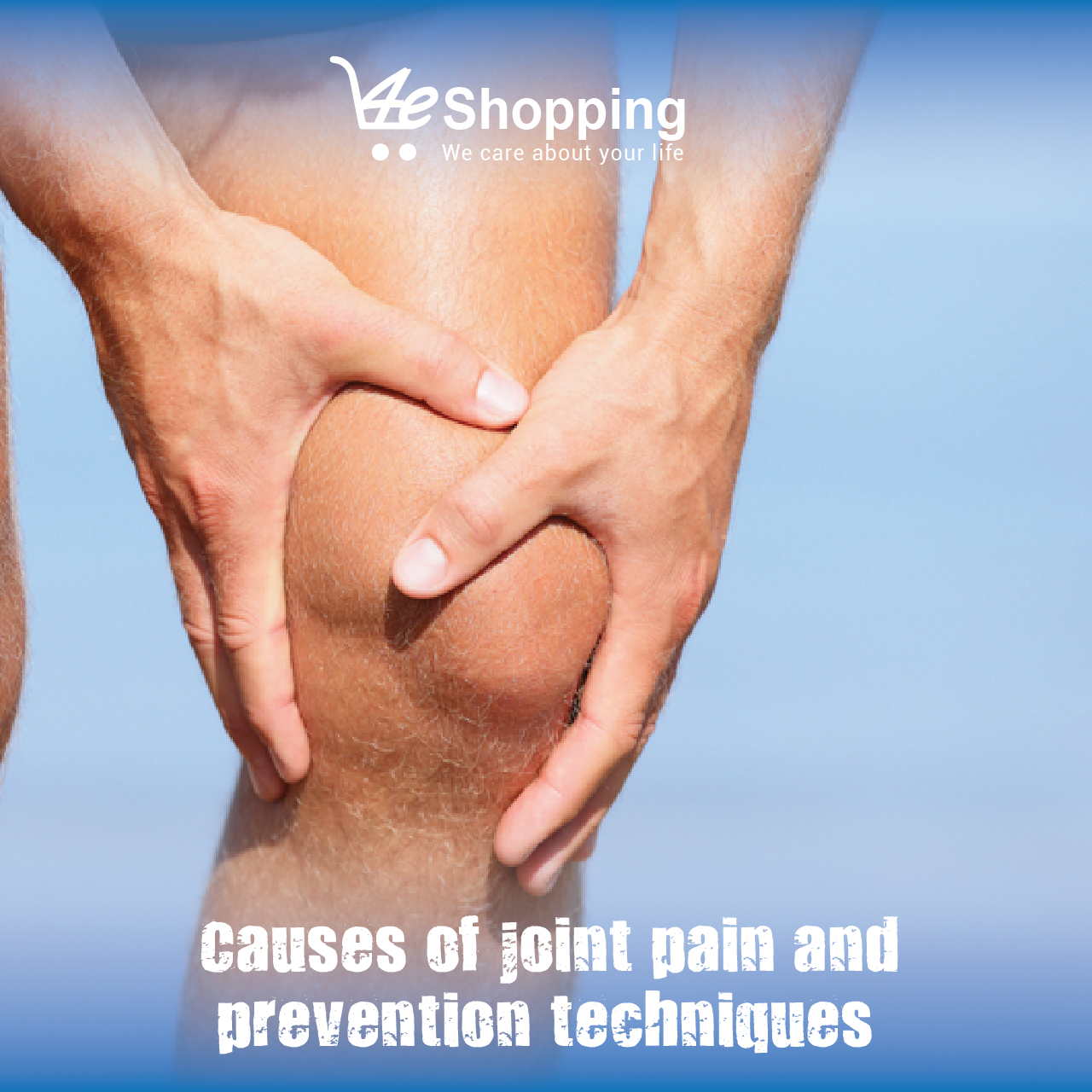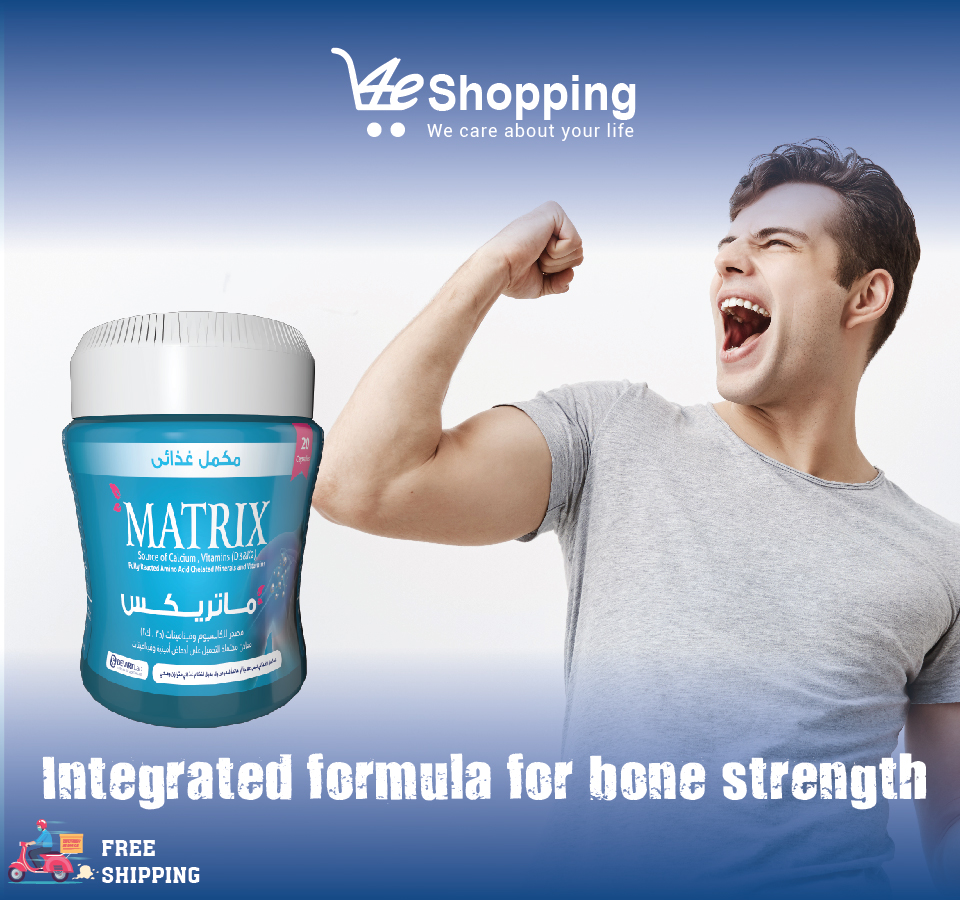
Pharmacist Pioneer Community. Why?
Jul 03 - 2022

Joint pain can be a source of annoyance for causing discomfort with or without mobility, and it can be severe enough to limit movement. Usually it accompanies old-aged people due to their vulnerability to calcium deficiency in their bodies, but it can also affect many age groups.
Its causes are varied, and there are many ways for treating and controlling it and other for its prevention.
What is joint pain and how can it be relived?
This is what we will be discussing in today's article:
1. What is joint pain and its types?
2. Causes of joint pain.
3. How to treat joint pain?
4. Tips for relieving joint pain.
5. Vitamins and minerals needed for joint health.
6. The best nutritional supplement for the prevention of joint pain.
1. What is joint pain and its types?
The human body contains 360 joints, and joints are the places where the bones in the body meet, such as the hip, knee, shoulder, elbow and ankle joints. The presence of joints allows for bone movement flexibility, as they are made up of a group of cartilage, ligaments, tendons, and fluid-filled sacs to cushion the joints and protect them against shock, and others to lubricate them.
These places may be exposed to inflammation that lead to discomfort and pain in one or more joint of the body and the pain is usually accompanied by swelling, redness and crackling sounds when moving.
The pain may be episodic for a short time as a result of exposure to some trauma, such as simple sprains of muscles or ligaments, or it may be chronic if it persists for more than 3 months, as is the case with arthritis and osteoarthritis.
2. Causes of joint pain
The causes vary between injuries, infections, inflammation, chronic and immune diseases:
Injuries
Infection
Inflammation, chronic and immune diseases
3. How to treat joint pain?
As mentioned earlier, the causes of joint pain are many, so it is necessary to visit a specialist to conduct some clinical examinations and make sure of the cause to begin prescribing the appropriate treatment.
The initial treatment can be divided into several sections:
Medications
If the pain is tolerable and there is no swelling, the physician may prescribe a simple pain reliever appropriate for the age and the patient history.
If the pain is moderate to severe and there is swelling, the physician will prescribe one of the NSAIDs and a topical muscle relaxant to relieve the pain and treat the inflammation causing the swelling.
In the case of severe pain, opioid pain relievers are resorted to by physicians, but very carefully due to their many side effects.
Physical therapy
A therapist will use techniques such as ultrasound, heat or cold therapy, and electrical nerve stimulation to strengthen the muscles around the joint, stabilize it and improve their range of motion.
Home care
Short-term joint pain can be eased with a few simple methods at home:
Depending on the cause of the pain, the physician may suffice with the aforementioned treatment, or he may prescribe different medications to treat the condition, depending on its progression.
4. Tips for relieving joint pain
Joint pain can make even the simplest activities difficult. Just one joint can negatively affect your entire body. For example, knee pain may cause you to walk in a way that affects the hips, back, and feet, resulting in episodes of pain or persistent pain.
Nevertheless, do not worry, there are many things you can do to relieve this pain. Here are some suggestions to help you relieve joint pain from head to toe:
Use the thumb of one hand to pull the thumb of the other hand away from the rest of the fingers slowly and gently, keeping the count to 25.
5. Vitamins and minerals needed for joint health
Whether you suffer from pain, or you just want to keep your joints healthy, several vitamins and minerals can help with that:
Calcium is a mineral that is extremely important for the growth of strong and healthy bones. If a deficiency occurs and is not treated in the long term, then most likely the situation will develop to lead to many bone and joint problems such as osteoporosis and rickets in children.
Vitamin D supports joint health, as it helps the body absorb calcium and make the most of it, and research has indicated that vitamin D may reduce the incidence of inflammation, so taking vitamin D supplements regularly may benefit those with inflammatory joint problems.
Potassium is important for maintaining fluid levels in the body. It also regulates the levels of calcium and phosphorous, which are two minerals important for bone and joint health.
For those who suffer from joint pain due to rheumatoid arthritis or potassium deficiency, it has been observed that taking potassium supplements showed significant improvement in pain and joint disease progression.
Magnesium can easily be considered a wonderful mineral, due to the effect it has on the body. It can help improve mood, sleep and relieve muscle pain. Moreover, magnesium is especially good for joints, as it may help prevent osteoporosis and prevent inflammation leading to joint pain.
6. The best nutritional supplement for the prevention of joint pain

Matrix is the best supplement with an integrated formula for the treatment and prevention of bone and joint problems and complications:
Why is Matrix the best choice for treating calcium deficiency?
|
Component |
Concentration |
|
Calcium |
150 mg |
|
Vitamin D3 |
120 IU |
|
Vitamin K2 |
30 mcg |
|
Magnesium |
60 mg |
|
Zinc |
2.7 mg |
|
Potassium |
50 mg |
|
Copper |
300 mcg |
|
Boron |
1 mg |
|
Manganese |
600 mcg |
|
Vitamin C |
15 mg |
|
B-Carotene |
500 IU |
This article was written by an integrated medical team affiliated with Devart Lab, the leading company in the field of Nutraceuticals in Egypt and the Middle East (Nutrigenomics and Food Fortification), by providing nutrients that are fortified with minerals and vitamins that the body needs on a daily basis to obtain effective results in the least possible time. By using the latest pharmaceutical technologies that ensure full absorption without any side effects.